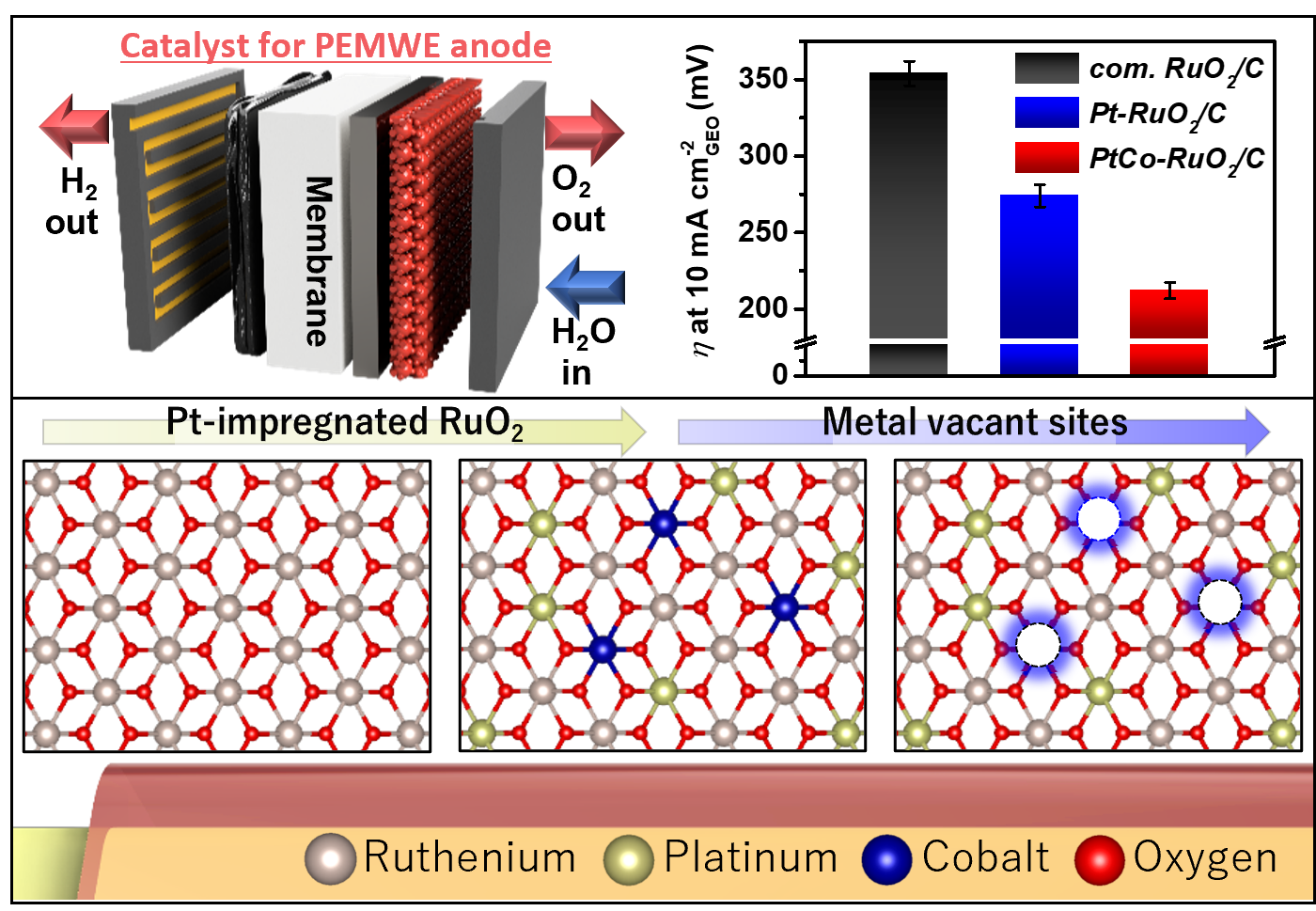Defective RuO2 possesses excellent initial activity toward the oxygen evolution reaction in acidic water electrooxidation due to the involvement of lattice oxygens, which, however, is the very reason for the accelerated dissolution of Ru species. Therefore, it is crucial to steer the electrochemical oxygen evolution towards the adsorbate evolution mechanism (AEM) for improved durability of the RuO2 phase in acidic electrolytes. Herein, we developed a method to mix Pt atoms with the RuO2 matrix in a controlled manner by exploiting the oxophilicity of certain first-row transition metals in pulling out the Pt atoms in Pt-based nanorod@Ru under oxidative conditions. The resulting nanorod-shaped PtCo–RuO2/C showed 212.6 ± 5.3 mV overpotential at 10 mA cm−2 in a half-cell test and exhibited mass activity and long-term stability that greatly surpass those of Pt–RuO2/C and commercial Ir/C. Microscopic and spectroscopic analyses and density functional theory calculation of the nanocatalysts before and after OER cycles were conducted to scrutinize the role of Pt dopants for the observed durability and activity, revealing that Pt dopants promote *OOH adsorption and deprotonation, thereby limiting Ru overoxidation during OER cycles. When PtCo–RuO2/C was applied to a proton-exchange membrane water electrolyzer, it showed a single-cell performance of 3.7 A mgRu+Pt−1 at 2.0 V, which greatly outperforms that of commercial IrO2.

https://pubs.rsc.org/en/content/articlelanding/2021/ee/d1ee02636d
 Kinetic Modulation of Amyloid-β (1–42) Aggregation and Toxici...
Kinetic Modulation of Amyloid-β (1–42) Aggregation and Toxici...
 Mn-dopant differentiating the Ru and Ir oxidation states in c...
Mn-dopant differentiating the Ru and Ir oxidation states in c...

















